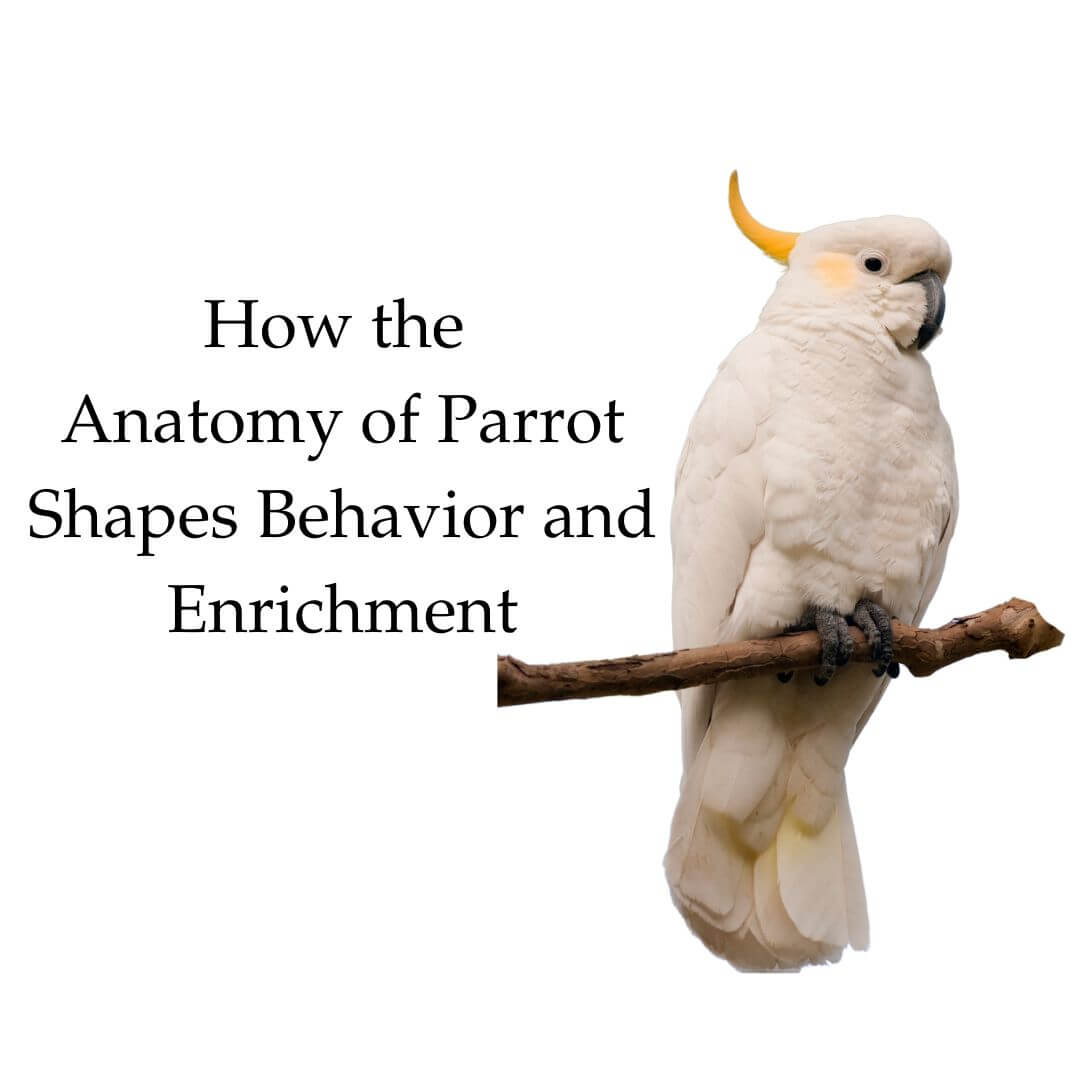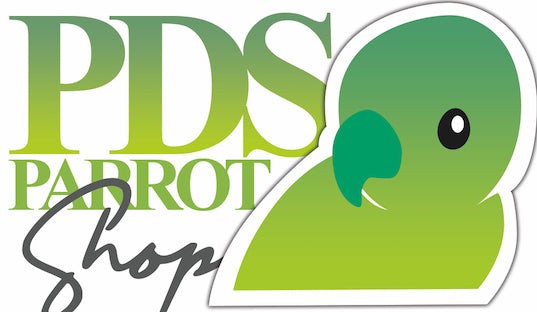
How the Anatomy of Parrot Shapes Behavior and Enrichment
Share
Unlocking Your Bird's Needs Through Body Awareness
When we think about bird enrichment, we often focus on toys and treats—but the real foundation lies in something deeper: the anatomy of parrot species.
Understanding how a parrot’s body works—how their beak, feet, wings, and senses function—can completely transform how we care for them. These aren’t just pets; they’re intelligent, active beings whose anatomy is perfectly designed for life in the wild. At home, we can reflect that with smarter enrichment choices and more meaningful interaction.
In this article, we’ll explore the anatomy of parrot species and how each part of their body plays a role in behavior, play, and enrichment. Whether you're new to parrots or a long-time companion, this knowledge will help you better meet their natural needs.

PDS Parrot Shop: Anatomy of Parrot Poster
Feet: Designed for Dexterity
One of the most fascinating features in the anatomy of parrot species is their zygodactyl feet—two toes pointing forward and two back. These specialized feet give parrots:
-
Powerful grip for climbing and hanging
-
Dexterity to hold, manipulate, and shred toys
-
Mobility to explore and interact with their world
-
Play independently with foot toys
These feet are incredibly busy! In fact, parrots often use them like hands.
Enrichment Suggestions:
-
Foot toys that are easy to grasp, toss, or destroy
-
Climbing ropes and ladders to encourage movement
-
Textured perches for healthy foot engagement
Beak: A Tool of Strength and Precision
A parrot’s beak isn’t just for eating—it’s used for climbing, defense, grooming, and playing. The upper beak (maxilla) is curved and powerful, while the lower beak (mandible) moves independently to crack seeds, shred materials, and interact with the world.
Beaks are also incredibly sensitive, acting like fingers and offering feedback on texture, temperature, and pressure.
Behavior Insight: If your parrot is “beaking” everything—biting cage bars, nibbling your fingers, or shredding everything in sight—they may be craving enrichment!
Enrichment Ideas:
-
Wood chews and shreddable toys to satisfy destructive urges
-
Foraging bird toys that challenge their problem-solving skills
-
Natural textures like coconut shell, palm leaf, or seagrass mats
Eyes and Ears: Hyper Aware and Highly Social
Parrots are highly social animals that communicate through body language, sound, and facial expressions. Their eyes, positioned on the sides of the head, give them a wide field of view and excellent color perception, including ultraviolet light.
Many species, like cockatoos, also have expressive crests they raise to show excitement, fear, or curiosity.
Watch for:
-
Crest raised = excitement, alertness, or curiosity
-
Eye pinning (rapid pupil dilation) = intense emotion (can be positive or negative!)
-
Feathers puffed = relaxed—or a warning, depending on context
Though parrots don’t have external ears like mammals, they hear extremely well. Their hearing plays a major role in vocal learning, call-and-response games, and social bonding.
Enrichment Suggestions:
-
Colorful, high-contrast toys
-
Interactive bird toys with bells or sounds
-
Call-and-response games to stimulate social interaction
Wings and Feathers: Built for Expression and Exercise
Wings do more than fly—they’re used to balance, express emotions, stretch, and maintain social cues. Even non-flighted birds benefit from flapping, climbing, and flaring movements.
Feathers also serve as mood indicators. A puffed bird may be calm or regulating body temperature, while tight feathers often signal alertness or agitation.
Enrichment Suggestions:
-
Swings, ropes, and platform perches to promote wing movement
-
Tunnels or canopy tents for hiding, napping, or playing
-
Soft preening toys to satisfy grooming instincts
Tongue and Taste: Curiosity in Every Bite
Let’s not forget the parrot’s tongue, a small but mighty part of their anatomy. It’s muscular, textured, and used for exploring, tasting, and rolling seeds. For some species, like lories, it’s even brush-tipped for licking nectar.
Enrichment Suggestions:
-
Textured treats like bird-safe berries or small crunchy snacks
-
DIY foraging cups with multiple taste layers
-
Smearable foods like mashed sweet potato
-
DIY Foraging trays with dry foods or sprouted seeds
Why Understanding Parrot Anatomy Matters
Without enrichment that supports the anatomy of parrot species, birds can suffer from:
-
Feather damaging behaviors
-
Stereotypical pacing
-
Screaming
-
Boredom-induced aggression
-
Anxiety or withdrawal
When you match toys and activities to the way your parrot’s body works, you support their mental and physical health—naturally.
Thoughtfully Designed, Anatomically-Inspired Toys
At PDS Parrot Shop, every toy we design is rooted in understanding the anatomy of parrot species. From textures to size, we consider how each part of their body engages with our enrichment.
We proudly offer:
-
Foot toys for coordination
-
Shredders for beak health
-
Foraging tools for cognitive stimulation
-
Swings and boings for movement and balance
In Summary
Understanding your parrot’s body isn’t just science—it’s a pathway to deeper connection. By recognizing how their feet, beak, wings, and senses drive their behavior, you can turn every day into an opportunity for play, growth, and trust.
More Articles on DIY Bird Toys
Illness in Birds and Their Symptoms
Author: Monika Sangar
Co-founder of Prego Dalliance Sanctuary, Artisan of PDS Parrot Shop
Monika Sangar is a parrot rescuer, bird food chef, and toy designer with over a decade of experience in avian care and nutrition. She is the founder of Prego Dalliance Sanctuary and the author of The Science of Avian Nutrition, a cookbook dedicated to fresh, healthy meals for parrots. Explore more bird care tips and bird toys at PDS Parrot Shop!

